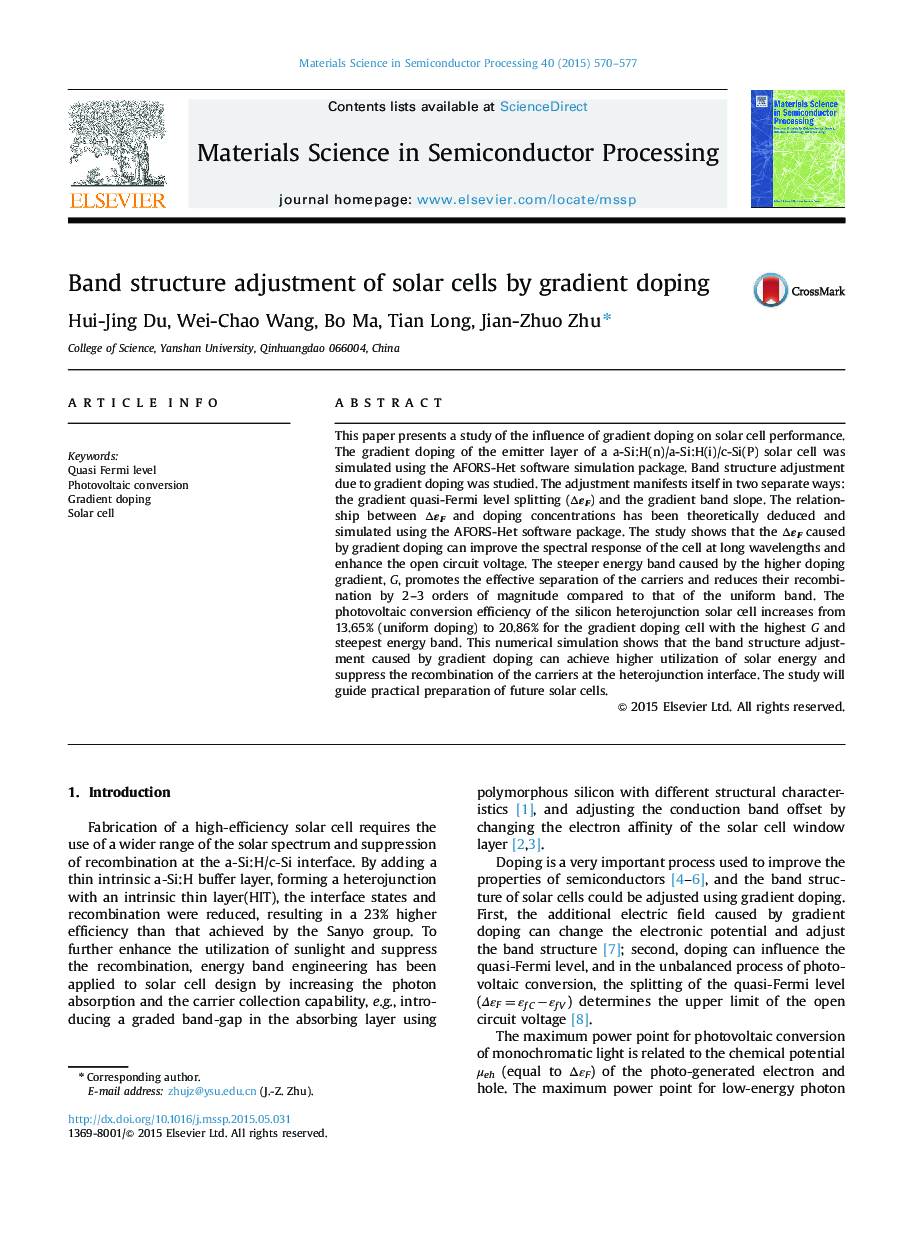| Article ID | Journal | Published Year | Pages | File Type |
|---|---|---|---|---|
| 7119167 | Materials Science in Semiconductor Processing | 2015 | 8 Pages |
Abstract
This paper presents a study of the influence of gradient doping on solar cell performance. The gradient doping of the emitter layer of a a-Si:H(n)/a-Si:H(i)/c-Si(P) solar cell was simulated using the AFORS-Het software simulation package. Band structure adjustment due to gradient doping was studied. The adjustment manifests itself in two separate ways: the gradient quasi-Fermi level splitting (ÎεF) and the gradient band slope. The relationship between ÎεF and doping concentrations has been theoretically deduced and simulated using the AFORS-Het software package. The study shows that the ÎεF caused by gradient doping can improve the spectral response of the cell at long wavelengths and enhance the open circuit voltage. The steeper energy band caused by the higher doping gradient, G, promotes the effective separation of the carriers and reduces their recombination by 2-3 orders of magnitude compared to that of the uniform band. The photovoltaic conversion efficiency of the silicon heterojunction solar cell increases from 13.65% (uniform doping) to 20.86% for the gradient doping cell with the highest G and steepest energy band. This numerical simulation shows that the band structure adjustment caused by gradient doping can achieve higher utilization of solar energy and suppress the recombination of the carriers at the heterojunction interface. The study will guide practical preparation of future solar cells.
Related Topics
Physical Sciences and Engineering
Engineering
Electrical and Electronic Engineering
Authors
Hui-Jing Du, Wei-Chao Wang, Bo Ma, Tian Long, Jian-Zhuo Zhu,
